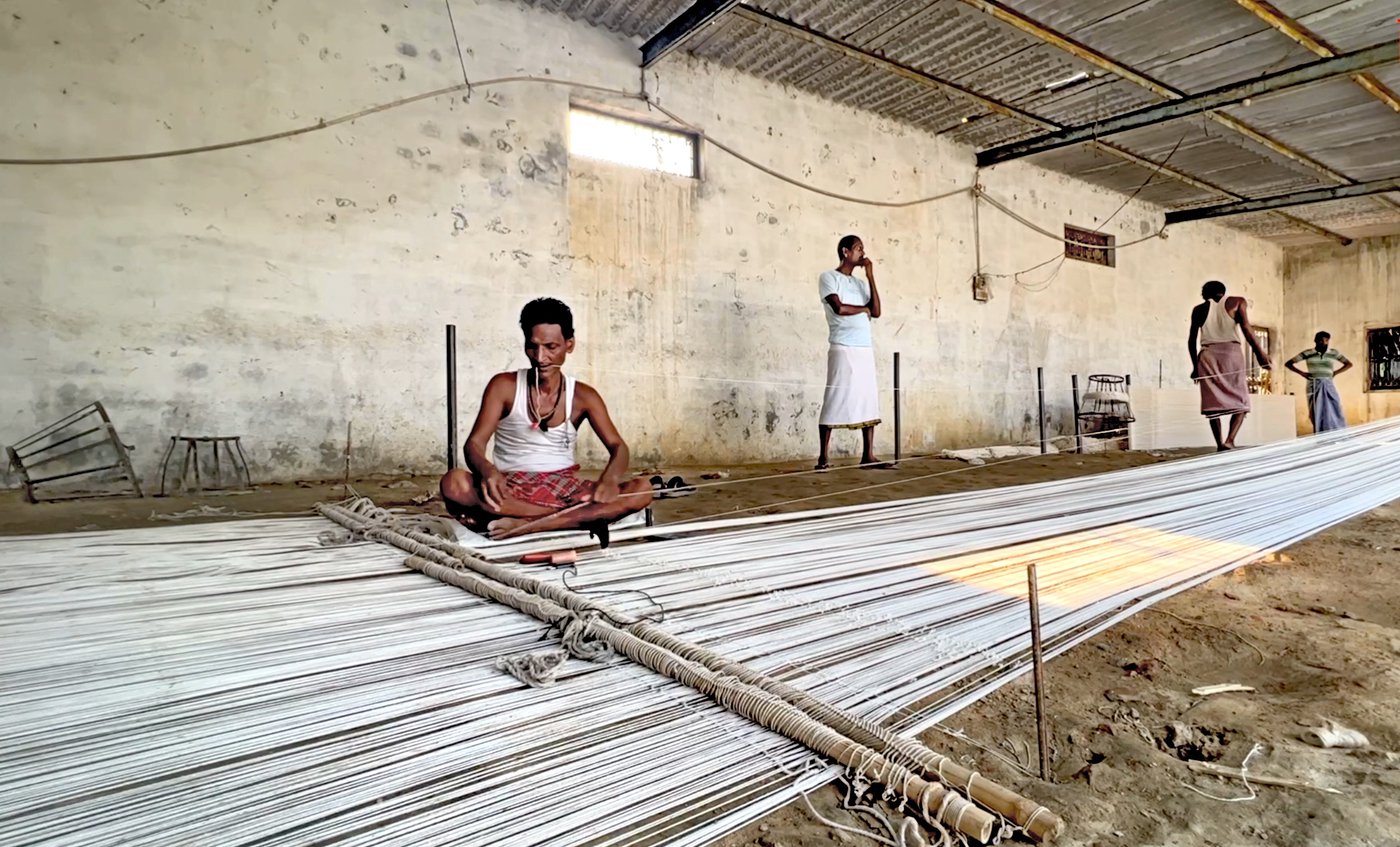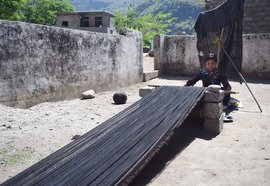“Bhadohi is the district of carpets. There is no other work here,” says Akhtar Ali, a weaver in his 40s. “I spent my childhood here and that is how I learnt weaving.” However, Ali has taken up tailoring now due to shrinking income from carpet making.
Located in the Mirzapur division of Uttar Pradesh, Bhadohi district is the centre of the largest carpet weaving cluster in the country. The cluster includes the districts of Mirzapur, Varanasi, Ghazipur, Sonbhadra, Kaushmbi, Allahabad, Jaunpur, Ghazipur, Chandauli. The industry provides employment to nearly two million rural artisans, including a large number of women.
What distinguishes the weaving process here is that the hand-knotted pile carpets are woven on vertical looms with qualities ranging from 30 to 300 knots per square inch. The process and the raw materials –wool, cotton and silk yarns – have been the same for at least two centuries. The artisans pass down the skill of hand knotting on the looms to their children.
In recognition of unique nature of their weaving methods, Bhadohi carpets got the Geographical Indication certification in 2010. The GI tag was expected to give a boost to the industry. However, it has not helped improve the carpet-weavers’ business.
For example, Mubarak Ali and Sons, founded in 1935, used to export Bhadohi carpets to countries like the United Kingdom, the United States, the European Union and Japan until it closed shop in 2016 due to falling orders. The grandson of Mubarak, the founder of the export house, and former owner, is 67-year-old Khalid Khan. “My grandfather and father were in this business only. Our business started during the British era when the carpets were exported with the label ‘Made in British India’.”
Carpet weaving in India is said to date back centuries. According to historial documents, the craft flourished in the Mughal era, especially in the 16th century during the reign of Akbar. The mass production of Handmade pile carpets, mainly woollen, started being mass produced in Bhadohi region from 19th century onwards.
The carpets made here go all over the world now. Nearly 90 per cent of the carpets produced in India are exported – the United States accounting for over half of the exports from the country, says the Carpet Export Promotion Council. In 2021-22, carpet export from India was worth $2.23 billion (Rs. 16,640 crore). Of this, handmade carpets accounted for $1.51 billion (Rs. 11,231 crore).
But Bhadohi’s carpet weaving industry is facing stiff competition from cheaper alternatives, especially machine made copies made in countries like China. “Duplicates of carpets are now easily made available in the market. The businessman or those with money don’t check or care much for it,” explains Ali, speaking about China.
Another Bhadohi resident, 45-year-old Urmila Prajapati is among those who inherited the art of carpet weaving. But dwindling income and health issues forced her to drop the strenuous occupation. “My father taught me the art of weaving carpets at home. He wanted us to work and earn independently. I used to have watery eyes. Some people suggested that I stop weaving, that my eyesight would be better once again, so I stopped weaving.”
Urmila, who now wears glasses, plans to start weaving carpets again. Like others in Bhadohi, she is proud of the artistic legacy she has inherited. But as this video shows, with shrinking exports, uncertain markets, the resultant movement of labour away from traditional occupations, Bhadohi is in danger of losing its centuries-old reputation as an important carpet weaving district.


